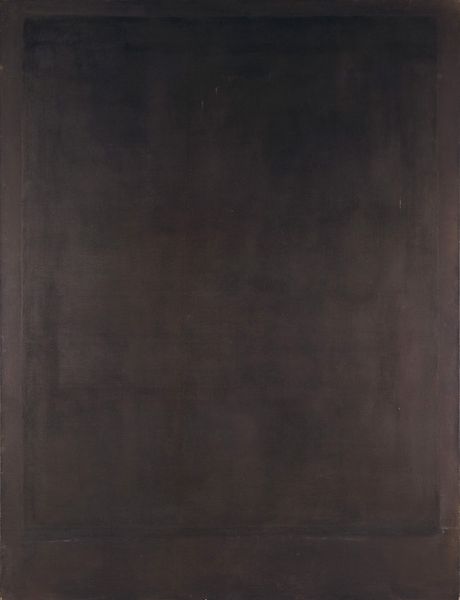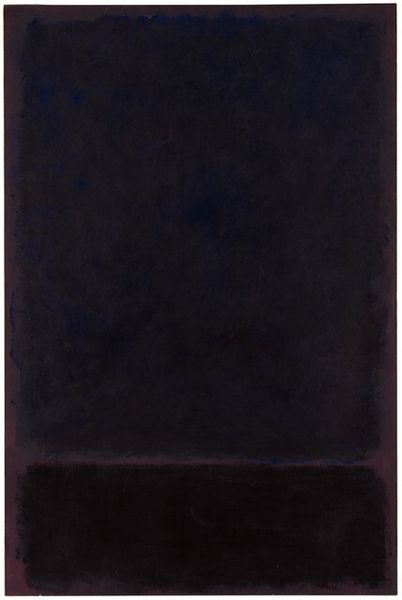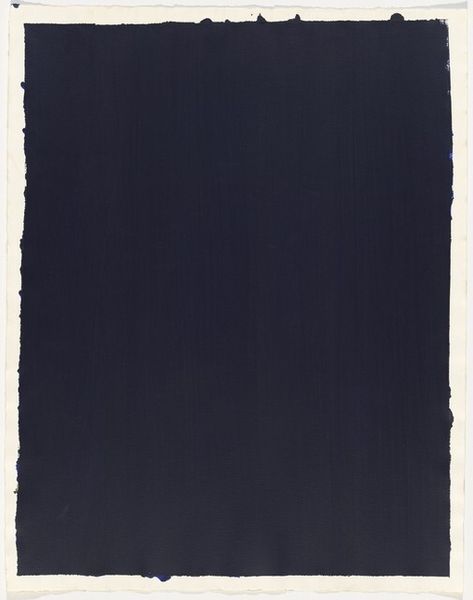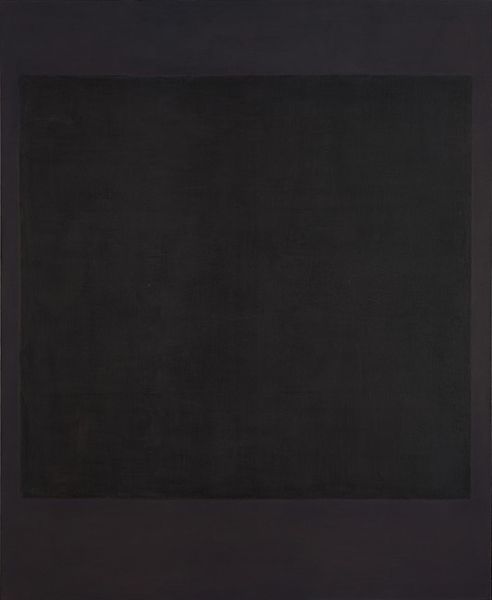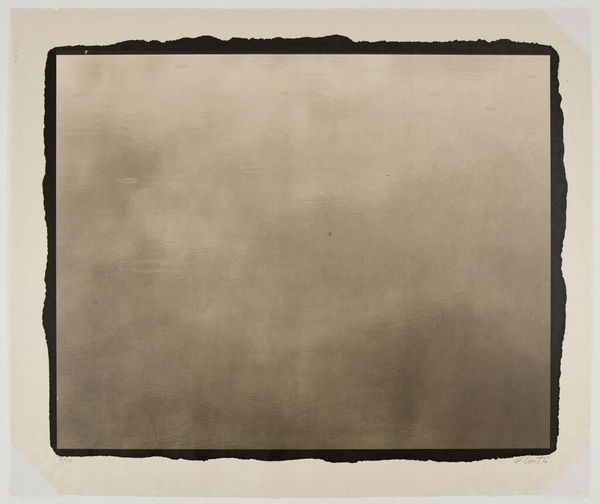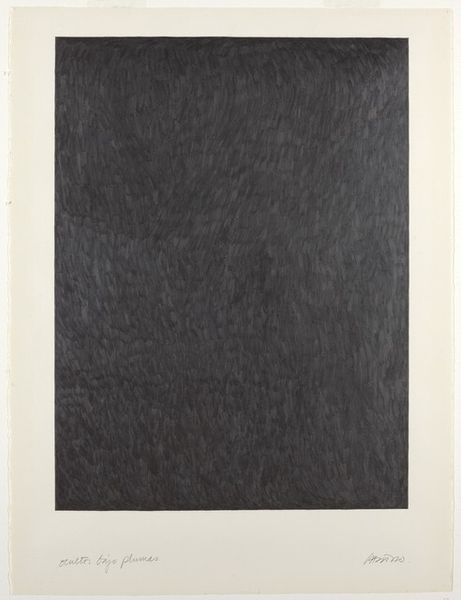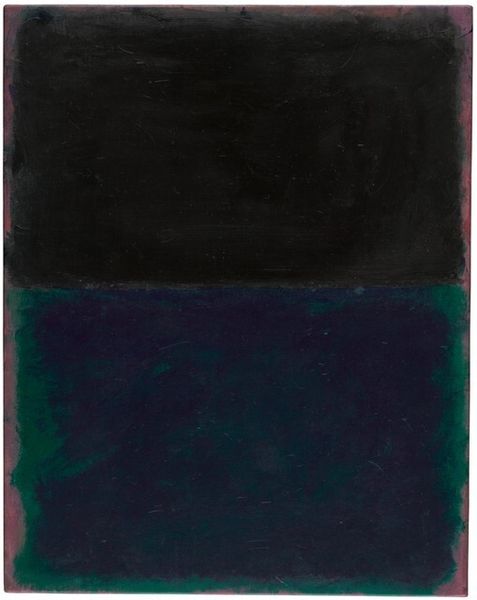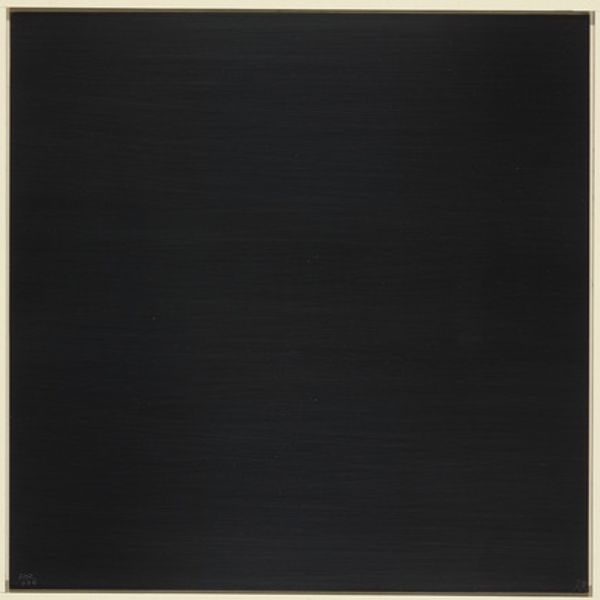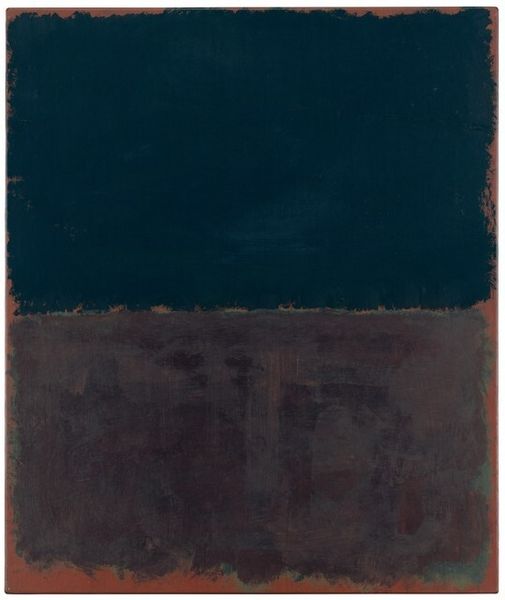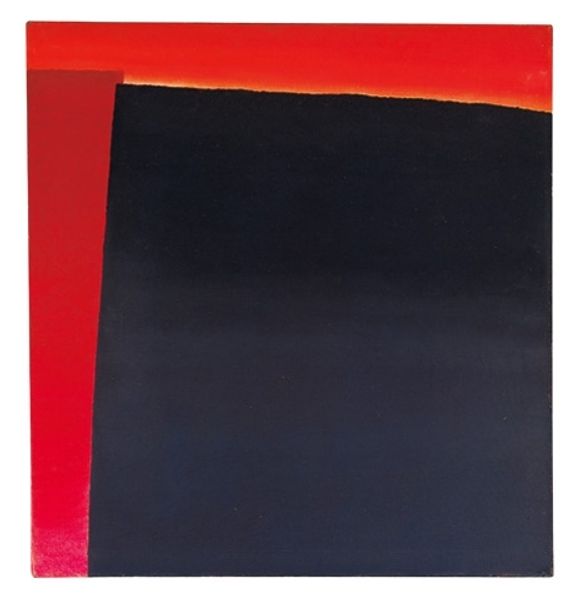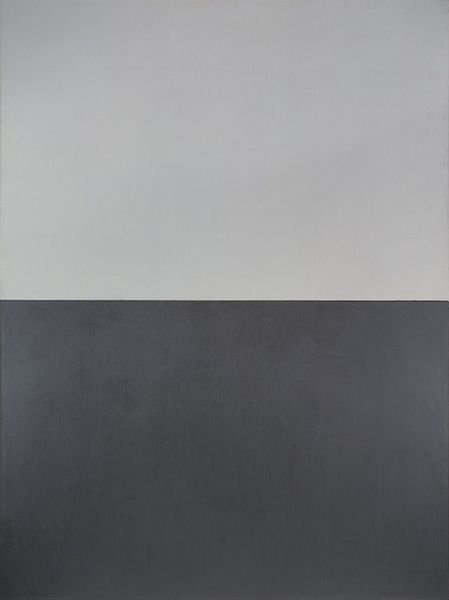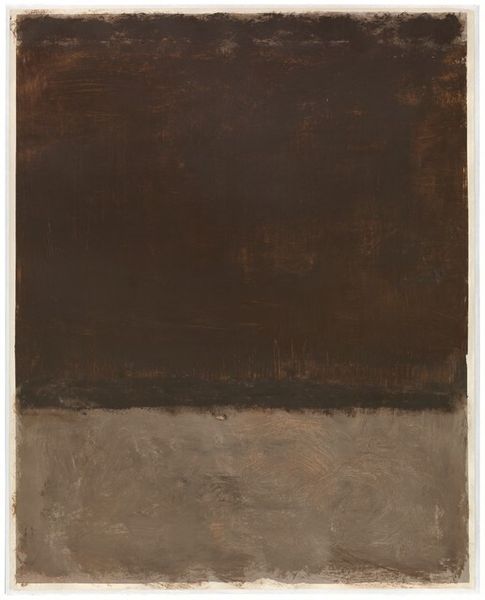
painting, oil-paint
#
abstract-expressionism
#
abstract expressionism
#
painting
#
oil-paint
#
colour-field-painting
#
form
#
abstract-art
#
abstract art
#
monochrome
Copyright: Mark Rothko,Fair Use
Curator: This somber painting is "No. 5" by Mark Rothko, an oil on canvas completed in 1964. It is a remarkable example of color field painting. What is your initial response? Editor: The color is enveloping. The deep blues pull me in, and there's a rough texture that I didn't expect. Curator: Yes, it’s important to note Rothko's approach in 1964 was consciously responding to social upheaval. It marked a turn to darker hues, many interpreting the change as an emotional response to his own struggles with depression and anxiety, perhaps even as a prelude to his later suicide. The painting embodies a sense of profound introspection and perhaps, mourning. Editor: It does feel incredibly weighty. And you can almost feel the labor of the artist through those visible brushstrokes. I'm drawn to the material presence of the pigment itself, like layers of deep midnight crushed and spread. The social and cultural context matters but how paint is manipulated and the artist’s physical involvement should be considered as well. Curator: Certainly. The scale invites that intimacy. Consider Rothko’s work in light of the Civil Rights Movement. The Civil Rights Act was also passed in '64. These blacks and blues speak to me of Black lives that are, that matter. Editor: That interpretation resonates. I see how it can evoke themes of social injustice through color and scale. It connects to the physical reality of social injustice that activists confront every day, I suppose. Rothko was born Jewish in Russia and the struggle for equality and human rights might be reflected. Curator: Absolutely. Understanding the work also requires we unpack these notions of race, class, and access—how these narratives converge within art. We must see these works as mirrors reflecting a troubled past and an inequitable present. Editor: It does seem reductive, doesn’t it, to label the piece as *merely* ‘abstract’? It is anything but disembodied, isn't it? The heaviness that you describe creates a powerful impact. It evokes that embodied and deeply social, personal experience. Curator: For me, Rothko’s later works act as a chilling premonition, reflecting the profound sense of loss and despair that permeated his later years and a deeply empathetic cry of the oppressed. Editor: For me it underscores the deep importance of considering artistic labor, how even the darkest pigments, when spread, arranged can express a depth of human experience and struggle that we all share.
Comments
No comments
Be the first to comment and join the conversation on the ultimate creative platform.
